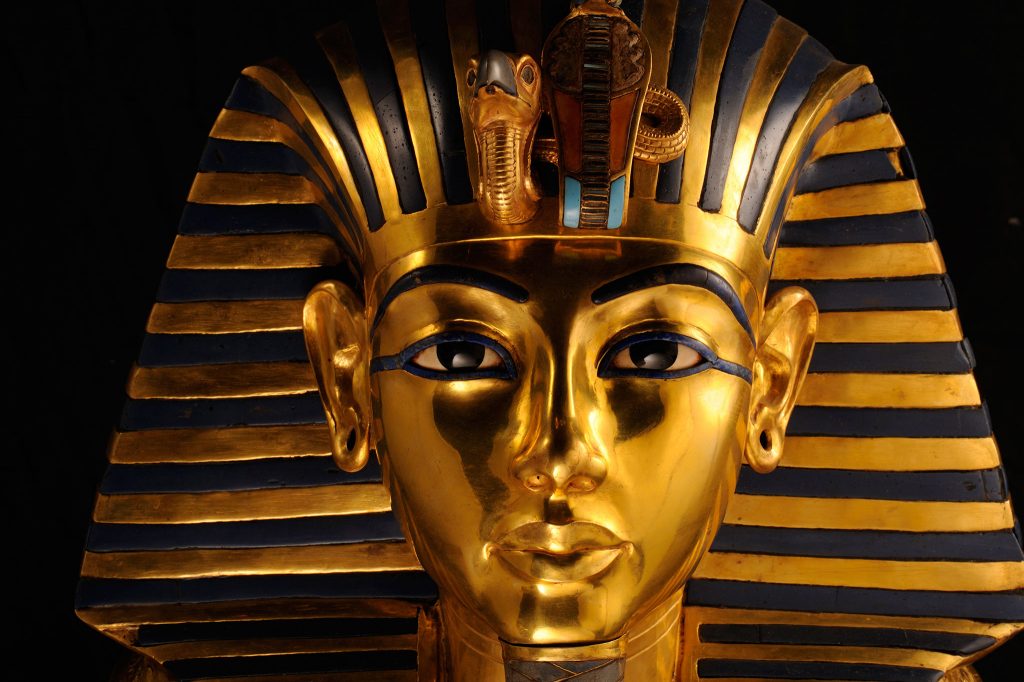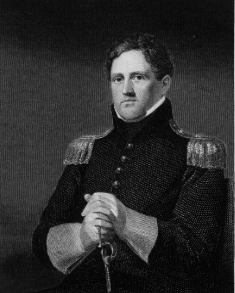Thanks to modern technology, the examination and research into mummified bodies and artifacts from ancient Egypt have answered many questions for scientists and historians alike. What was the culture of these ancient people? Who were their leaders? And what was the process and purpose of mummification? In the twentieth century, the tomb of King Tutankhamen was discovered, and that discovery has answered many of these questions. Thanks to the discoveries of the Ancient Egyptian’s burials of their kings, particularly that of King Tutankhamen, we have learned more and more about the Ancient Egyptian’s history and traditions when it comes to laying the dead to rest.

Scientists and archaeologists say that King Tutankhamen became king at the very young age of nine. However, he may have been no more than a puppet ruler, and the true power behind the throne was said to belong to a man who may have been related to Tut named Ay. Young Tut was a physically frail youth. Through the examination of his body, scientists have found malformations in his feet, and they suspect that the young man had walked with a cane.1 Though he was depicted as fighting in battles and slaying enemies in drawings on the walls of his tomb, there is no actual evidence that this young man participated in any actual battles. However, scholars believe that these depictions merely represent an extension of Tut’s power. It was believed that he married his half-sister, Anthesenpaaton, who was also very young. Though the two had not produced any known heirs, the bodies of two babies were found buried in Tut’s tomb. Archaeologists believe these babies may have been the children of young Tut and his queen.2 He reigned during a period of time known as the New Kingdom. At the young age of eighteen, Tut’s short life and reign over Ancient Egypt had come to an end. The exact cause of Tut’s death remains a mystery; however, scientists believe it may be connected with an infection spread by a broken leg.3
In 1922, the tomb of King Tut was discovered. This finding helped give archaeologists an understanding of the wealth of Egyptian civilization, especially for those living in the upper class. The value of the gold and treasure found in King Tut’s tomb, as was the case for treasures found in other areas of ancient Egypt, surpass that of many others discovered from ancient times. It also has given scientists and researchers much insight into the history, tradition, and science behind the process and purpose of mummification.4
Scholars have discovered that mummifying bodies was tied to the ancient Egyptians’ belief about the afterlife. Egyptians believed that the body was not just a corpse after death, but a resting place for the soul. Osiris, the god of the resurrection and a very respected god to the Egyptians, would judge the soul of the dead.5 Because the Egyptians believed the soul would move on, King Tut’s final resting place was filled with tools and items that the King might need in the afterlife. It contained artifacts such as clothing, musical instruments, jewelry, lamps, chairs, and baskets with food and wine. In addition to the tomb itself, much has been discovered from bodies that were laid to rest so many years ago, including the body of King Tut. The success of the preservation can be accredited to the detail that the ancient Egyptians provided during the process of mummification. Through many years of research and observation, scientists and archaeologists have found that this important practice evolved over time, but it has followed the same basic instructions and procedures.6 After his death, all of Tut’s organs were removed from the body, except the heart, and placed into containers called Canopic Jars. Afterwards, Tut’s body was then covered in a mixture called natron, which consisted of salts that helped inhibit bacterial activity and dehydrate the body. After a little over a month, the mixture of salts was removed from Tut’s body and his cavities were filled with cloth containing resin to give the corpse its shape back. Only after this was the body wrapped with linen, giving it the classic “mummy” appearance. Tut was then placed in a solid gold coffin, and the coffin was then placed in his tomb.7
Traditionally, it was only emperors, kings, and members of the upper class who were mummified, but as time progressed it became a tradition for many members of this ancient society.8
However, because Tut was a king, his resting place was filled with ancient artifacts and treasures in addition to his mummified corpse. Although his reign, and his life, were cut very short, the ancient Egyptians left more than a final resting place for the boy King’s soul when they laid him to rest: they left us, the people of the 21st century, with answers.
- Phillip A. Mackowiak, Diagnosing Giants:Solving the Medical Mysteries of Thirteen Patients Who Changed the World (Oxford: Oxford University Press, 2013), 3. ↵
- Salem Press Biographical Encyclopedia, January 2015, s.v. “Tutankhamen,” by Donald C. Simmons. ↵
- Salem Press Biographical Encyclopedia, January 2015, s.v. “Tutankhamen,” by Donald C. Simmons. ↵
- G. Elliot Smith, Tutankhamen and the Discovery of His Tomb (Routledge: Hoboken, 2013), 1. ↵
- E. A. Wallis Budge, Egyptian Religion : Egyptian Ideas of the Future Life, Routledge Revival (London: Rutledge, 2013), 41. ↵
- Salem Press Encyclopedia of Science, January 2015, s.v. “Mummification,” by James L. Robinson ↵
- Salem Press Biographical Encyclopedia, January 2015, s.v. “Tutankhamen,” by Donald C. Simmons. ↵
- George Hart, Ancient Egypt (New York: DK Publication, 2008), 1. ↵



87 comments
Amanda Gutierrez
Fantastic article! I’ve always found the history and mummification of the Ancient Egyptians to be very interesting and this article did not disappoint. What I found the most interesting while reading was the discovery of King Tut’s malformations in his feet. Overall, this was a well written and very interesting article! Awesome job!
Juan Arceo
After reading this article, I have more question than answers about King Tut. I knew that he was a young ruler but never knew that he became king at the age of nine and also was never aware that he “married” his half sister. The whole ritual of mummifying is a touchy subject especially when it comes to the topic of King Tut and the curse that he brings, but it is still interesting to see the different rituals that the people of that time believed in.
Yazmin Garza
I know that when most people hear the name “King Tut” their minds automatically go to the curse that is associated with the archeologist that discovered and opened his tomb (a curse I 100% believe in), but I love thinking about the science and history that also come with his name, and this article definitely delivers. The thing that struck me the most about this article was that the stated fact that the mummification process took over a month to complete. When I used to think about mummies, I always assumed they were in their tombs a few days after they died, but now I know better.
Michael Hinojosa
I never would’ve thought that the famous “King Tut” became a king at the age of nine years old, I also especially didn’t think that he was nothing more than a puppet ruler! The media, and various mini golf establishments, always displayed King Tut as a powerful ruler who was a self made man without any strings attached. But after reading this article I’m starting to have my doubts about that since it was evident he died in his prime and was no more than a puppet.
Bianca-Rhae Jacquez
This article shows what amazing things occur when scientist and archaeologist work together. I grew up hearing about King Tutankhamen in school and I think it is fascinating that science was able to discover that he wasn’t this perfect person. He went into power at such a young age which is surprising to many. Its sad that he might’ve not been able to walk.
Eric Ortega Rodriguez
This article is amazing. This article demonstrates the great things that can occur when archeologist and scientist collaborate. This is the first time that I hear about King Tutankhamen. What I found the most interesting within the article was that they were able to discover that King Tutankhamen had malformations in his feet and that it was difficult for him to walk. Overall, great article with a cool perspective on what archeologist and scientist can accomplish. Good work.
Hali Garcia
Oh wow, I did not know King Tutankhamen was nine years old when he became king. I have heard of King Tutankhamen when I was a kid but the only thing I really knew about him was that he was a king. It is interesting to read how he might not have been able to walk, how the cause of his death is a mystery, and his mummification process was. Overall, this is a very well written article, and I enjoyed reading it.
Samantha Ruvalcaba
Reading this made me admire how far scientists and archaeologists have improved their methods and come up with the technology to do so accordingly. When I first learned about King Tut when I was younger, I was always fascinated by his death and its mystery, reading your article brought some relief to my curiosity because I was able to know more about his ancient life.
Valeria Perez
The first time I heard about King Tutankhamen was when I was a kid watching the movie Night at the Museum. I never knew that he died at such a young age and that he had so much trouble with his health. A question a do have though is in the murals he is depicting fighting battles but scholars say this was a representation of his power, but how much power could he have had if he was always sick?
Diego Aguilera
I really liked this article and I was aware that King Tut was young when he became the ruler and that mummification was seen as a type of afterlife for the royal Egyptians. However, I had no idea he was only 9 years old and possibly could barely walk and I was not aware of how extensive the process of mummification was nor that it became popular to perform on those not in the royal class as well.